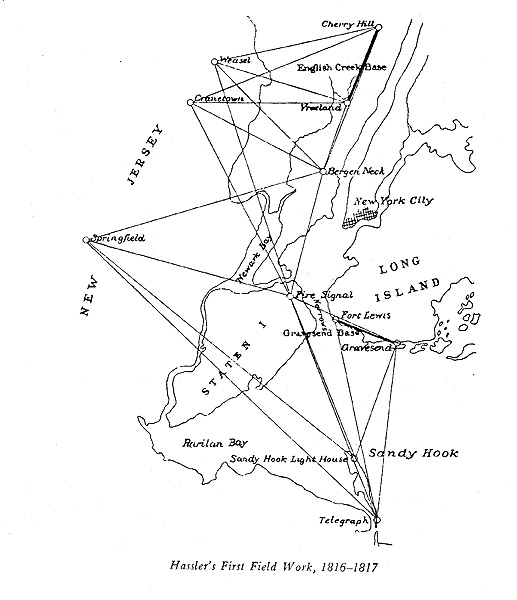Much like the words "community" and "network" that I blogged about earlier this week, I have a definite sense of what it means to triangulate data. It's a method that applies geometry and trigonometry to accurately measure distances and locations.
At its simplest, from https://en.wikipedia.org/wiki/Triangulation_(surveying):

Less simply, from https://celebrating200years.noaa.gov/survey_marks/hasslers_first_sketch.html:

I find myself almost offended by the way the term is used in qualitative research, from https://www.meetup.com/ResearchOps-San-Francisco/events/265733187/:

It is certainly possible to draw a triangle between the labels of 3 data sets, but this figure has nothing to do with geometry or trigonometry, or triangulation or analysis. I feel co-opting the term provides a thinly veiled illusion of rigor for qualitative research while simultaneously discounting the rigor and precision involved in surveying. Why don't qualitative researchers just say the different datasets agree or don't agree?
Nice thing about the internet, you can almost always find someone to agree with you. ;)
Oppermann, M. (2000), Triangulation — a methodological discussion. Int. J. Tourism Res., 2: 141-145. doi:10.1002/(SICI)1522-1970(200003/04)2:2<141::AID-JTR217>3.0.CO;2-U
I don't know the full etymology of triangulation and how it came to be used in the social sciences, but the ways I've typically heard it don't look like that last graphic that you share, but more like the sailboat one at the top, suggesting that with two (or more, so here we move from triangle) points of data, we can locate the third point, which is where our findings lie. I hope that is making sense -- long day, I'm tired and conserving words. :)
ReplyDeleteThat said, some researches discuss the process of examining various data points to tell a story in terms of confirmation and disconfirmation.